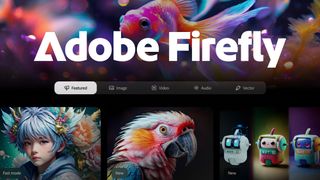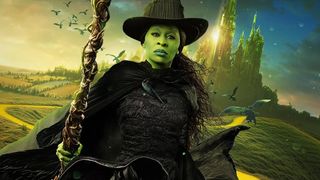Q&A: Alex Jenkins
Alex Jenkins trained as an animator before becoming an interactive designer at agency Unit9. Here he talks about his techniques and the influence his background as an animator has had on his work.
Computer Arts: How did you get to where you are today? What is your background?
Alex Jenkins: I first trained as a graphic designer at Nottingham Trent University and then worked in a print-based design studio. After that, I went to Central Saint Martins and did a post-grad certificate in animation. I started freelancing after that, but found myself working increasingly in multimedia, so I started to combine the design skills I had with my love of character illustration and married that with animation skills, too. It's great working at Unit9 because you get mini-projects to work on that you can control yourself, unlike production, where you work on one part of a bigger project.
CA: Do you think interactive projects can be a little restrictive?
AJ: When I started in Flash I was fighting the restrictions of 56k dial-up modems and it was quite challenging. But now the door is much more open - we can put in 3D and we don't have to stay reined-in just working with Illustrator vectors any more. There's plenty of opportunity to explore all types of media.
CA: What was the thinking behind the Creative Mind site you created for Adobe?
AJ: It was aimed at the design community, which already knows the product [Creative Suite 2.3] and what it can do. Adobe wanted to create some excitement, and thought it would get a more sympathetic ear from designers with a site like that, rather than one that just displayed the bare facts. We were trying to find new ways to navigate and to impart stories, so that's why it's not really text heavy.
CA: Do you have a set workflow for your interactive work?
AJ: Everyone has their own way of working, but I follow a production route that's similar to animation, because it's efficient and it works. You start with a few sketches and mood boards, send them off to the client and probably move on to sketching characters. Everything starts loosely. Storyboards can be really useful for telling you the mechanics of how an interface works.
CA: Where do you think things are going with the web and interactive media?
AJ: People are starting to see it as a platform for entertainment. Things are converging more and more. I went to the cinema the other day and the opening titles for the film had definitely been influenced by interactive work, because they [the film producers] would never have chosen to do them in such a clunky way. But we have chosen to do stuff like that because of the limitations of the technology. Sometimes when you're limited by technology you're forced to think creatively and you get a far stronger result.
INFO To see more of Unit9's work, visit the website at www.unit9.com. Adobe's Creative Mind site can be found at www. adobe.com/creativemind/microsite.html

Thank you for reading 5 articles this month* Join now for unlimited access
Enjoy your first month for just £1 / $1 / €1
*Read 5 free articles per month without a subscription

Join now for unlimited access
Try first month for just £1 / $1 / €1
Get the Creative Bloq Newsletter
Daily design news, reviews, how-tos and more, as picked by the editors.
The Creative Bloq team is made up of a group of design fans, and has changed and evolved since Creative Bloq began back in 2012. The current website team consists of eight full-time members of staff: Editor Georgia Coggan, Deputy Editor Rosie Hilder, Ecommerce Editor Beren Neale, Senior News Editor Daniel Piper, Editor, Digital Art and 3D Ian Dean, Tech Reviews Editor Erlingur Einarsson and Ecommerce Writer Beth Nicholls and Staff Writer Natalie Fear, as well as a roster of freelancers from around the world. The 3D World and ImagineFX magazine teams also pitch in, ensuring that content from 3D World and ImagineFX is represented on Creative Bloq.
Related articles
-

-

-

-

